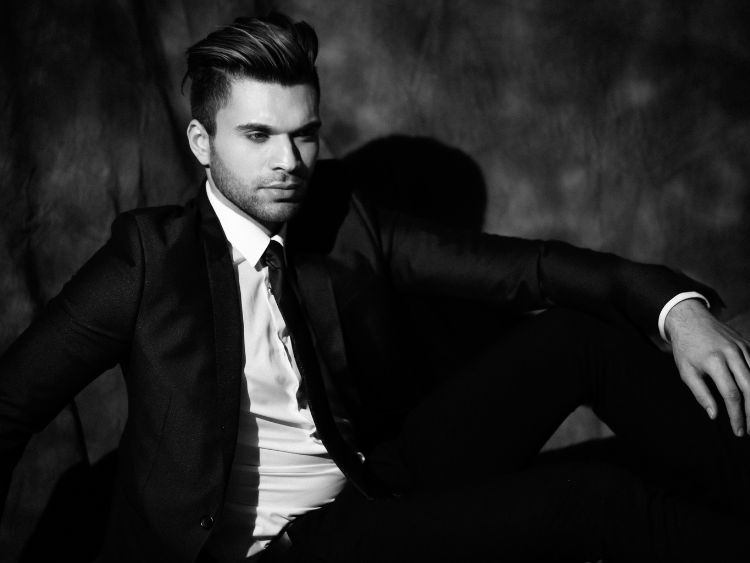The roaring twenties were an era marked by unprecedented changes, and men’s fashion was no exception. As jazz music and flapper culture took center stage, men’s fashion evolved, leaving behind the stiff Victorian styles in favor of a more relaxed yet sophisticated aesthetic. If you’ve ever wondered what made 1920s men’s fashion iconic, you’re about to take a stylish trip back in time!
The Dawn of Modern Menswear
In the 1920s, men’s fashion was more than just about clothes—it was about redefining masculinity. The decade introduced new silhouettes, bolder fabrics, and a fusion of formal and casual styles. Unlike today’s minimalist wardrobe, men in the ’20s took pride in their appearance, often dressing to impress on any occasion.
The Iconic 1920s Suit: The Backbone of Men’s Fashion
Without a doubt, the suit was the centerpiece of 1920s menswear. However, the suits of this era underwent a significant transformation. Instead of the boxy, tight-fitting designs of the previous decades, 1920s suits featured more relaxed and tapered cuts. This allowed for greater mobility while maintaining a refined look.
- Wide-Lapelled Jackets: Men’s jackets became looser, often with wider lapels that pointed down to the waist.
- High-Waisted Trousers: High-waisted pants were all the rage, and most men preferred to wear them with suspenders to ensure a perfect fit.
- Double-Breasted Suits: While single-breasted suits were common, double-breasted designs grew in popularity, adding a level of formality.
Transitioning from work to play, men often donned these suits during social events and family gatherings. Plus, the suits came in a variety of fabrics such as tweed, wool, and linen, depending on the season.
Casual Fashion: A Revolution in Comfort
Formal suits were one side of the story, but casual wear took on a life of its own during the ’20s. With the rise of leisure activities like golf and tennis, men sought comfortable yet stylish clothing for these pursuits. Enter knitwear and soft fabrics—both staples of 1920s men’s fashion.
- Plus Fours: These were knickerbockers or short trousers that extended just four inches below the knee. Paired with long socks, plus fours were perfect for casual outings or sports events.
- Sweaters and Cardigans: Knitwear became popular in this decade, with men frequently wearing sleeveless sweaters or button-down cardigans over their dress shirts. Patterns, particularly argyle, were favored by many.
- Fedora Hats: No casual or formal outfit was complete without a stylish hat. The fedora, in particular, became a go-to accessory for men in the ’20s, adding a sophisticated touch to any ensemble.
The Role of Fabrics and Patterns
One notable feature of 1920s men’s fashion was the choice of fabrics and patterns. Men during this era embraced checks, stripes, and plaids, creating visually appealing contrasts in their outfits.
- Tweed: This durable fabric became a staple for both formal and casual wear, especially in colder months.
- Pinstripes: Pinstriped suits were often associated with the business class, giving men a sharp and authoritative look.
- Plaid and Checks: These bold patterns found their way into everything from suits to outerwear, showcasing a flair for creativity and individuality.
Accessories: The Devil’s in the Details
If there’s one thing to say about 1920s men, it’s that they knew how to accessorize! No look was complete without a few well-chosen add-ons that emphasized their status and style.
- Pocket Watches: Although wristwatches were gaining popularity, pocket watches were still the preferred timepiece for many men, often tucked into the vest pocket of a three-piece suit.
- Cufflinks and Tie Clips: Men used these accessories to add a touch of personality to their formal wear.
- Gloves and Canes: Though not as common today, gloves and canes were often worn as symbols of sophistication and class.
Footwear: Stepping in Style
Shoes played a pivotal role in 1920s men’s fashion. Oxford shoes, with their sleek design and durability, were a wardrobe essential. On more casual occasions, men favored loafers and two-tone shoes, particularly during the summer months.
Grooming: The Polished Gentleman
Fashion in the 1920s wasn’t just about clothes—it was a complete lifestyle. Men took grooming seriously, and the “clean-shaven” look became fashionable. Hair was neatly combed and often slicked back with pomade to achieve the polished look many men aspired to.
FAQs About 1920s Men’s Fashion
Q1: What fabrics were most common in 1920s men’s fashion?
Wool, tweed, and linen were the dominant fabrics during this era, with wool being particularly favored in colder months. For summer attire, lightweight fabrics like linen were more common.
Q2: How did men’s fashion in the 1920s differ from previous decades?
The biggest change was the shift from stiff, tailored suits to more relaxed and comfortable styles. The introduction of casual wear, including plus fours and knitwear, also marked a departure from the strict formalism of previous years.
Q3: Were accessories important in 1920s men’s fashion?
Absolutely! Accessories such as fedoras, pocket watches, gloves, and cufflinks were essential for completing a man’s outfit during this time.
Q4: How did men style their hair in the 1920s?
Men favored short, neatly combed hairstyles. Pomade was commonly used to slick hair back for a refined, polished appearance.
Q5: Did men in the 1920s wear jewelry?
Men generally avoided jewelry, except for practical items like pocket watches and cufflinks. Simple and functional accessories were the standard.
Conclusion
1920s men’s fashion was all about balance—combining sophistication with a newfound sense of freedom and creativity. From the sharp suits and bold patterns to the accessories and casual wear, this decade paved the way for the modern man’s wardrobe. Whether you’re attending a themed event or simply curious about vintage fashion, understanding the iconic styles of the 1920s offers inspiration that remains relevant even today.
Authoritative Links for Further Reading (Plain URLs)
- https://www.vintagedancer.com/1920s-mens-fashion/
- https://www.gentlemansgazette.com/1920s-mens-fashion-guide/
- https://fashionhistory.fitnyc.edu/1920-1929/
- https://www.thefashionisto.com/1920s-men-fashion-styles/

